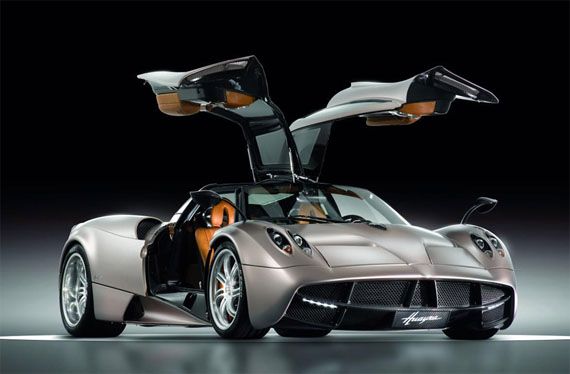
The Huayra marks the continuation of Pagani's alliance with Mercedes' AMG department. The Huayra is powered by a bi-turbo 6.0-litre V12 and will be sold in two versions: the standard engine with 700 bhp and 664 lb ft. and a Sport version with 730bhp and 811 lb ft. The block is actually shared with Mercedes' own SL65 Black Series but Pagani has commissioned AMG to reduce turbo lag and improve the throttle progression, resulting in new heads, pistons, manifolds and turbos.
Pagani claims that during testing, the Huayra can reach a top speed of 230mph, and can sprint from a standstill to 62mph in 3.3sec. With this performance, the vehicle will be prone to slipping. To prevent that, the company installed a three-stage Bosch traction control system. The Huayra features a mandatory seven-speed paddle-shift gearbox, which was built for Pagani by UK race specialist XTRAC. The gearbox is mounted transversely behind the engine to cut the length of the drivetrain.
The Huayra is bigger than the Zonda and bears more safety equipment but kerbweight has been kept to 1350kg (dry). The Huayra also features forced induction, which means that the Huayra is homologated for the U.S.-the first time for a Pagani vehicle.
The Huayra is also the first to have its enormous gullwing doors, like the rest of the body, to be constructed from carbonfiber. The tub is carbon-titanium and the titanium enables the material to flex just slightly, instead of shattering, when there’s an impact; however, the strength is not compromised.
Pagani intended for the overall body to act like an aircraft wing, adjusting its shape to manage the airflow over it to best effect. It is able to do so with the use of four moveable aerodynamic flaps, one at each corner of the car and each being independently and automatically operated. These don’t only modify the downforce as what’s needed for acceleration and braking but these also work across the car to add grip during cornering.
Via 4WheelsNews









